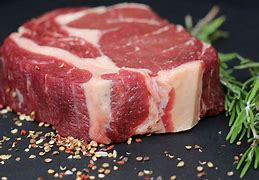
To have a chance of meeting our global climate targets, ending deforestation and protecting the world’s wildlife, we need to eat much less meat. Both plant foods and meat substitutes have a much lower carbon footprint, use much less land and cause less water pollution than meat. The environmental toll can be 10 to 100 times lower than that of beef or lamb.
Meat substitutes are our best shot at feeding the world without destroying it. The backlash to these products is counterproductive. And the blanket dismissal of such foods as “ultra-processed” isn’t helping. Most are defined as ultra-processed based on the methods used to produce them.
But if we list the reasons UPFs are bad for our health, meat substitutes have almost none of those qualities. As shown above, they are generally not high in calories – most are lower than meat. They have less saturated fat, almost no added sugars and are higher in fibre.
What they do have are additives. Impossible Foods adds them to give its burgers a juicy, meat-like texture. Many companies add binding agents and preservatives to extend their products’ shelf lives. People get freaked out by lists of ingredients they don’t recognize.
But the notion that how pronounceable something is can determine whether we should eat it is not scientifically sound. You can probably pronounce “lead” and “mercury” but I don’t recommend seasoning your dinner with them.
This is still an area that needs more research, but I’ve seen little good evidence that additives or sweeteners consumed within regulatory guidelines have negative health impacts.
We shouldn’t be eating them all the time, but as part of a diverse diet, there is little to suggest meat substitutes are bad for our health. In fact, some can be a nutritional plus.
Meat substitutes are mostly targeted at wealthy consumers. But the implications of a backlash to processed food are just as harmful for people with less money – if not more so. More food processing, not less, could improve health and nutrition in developing countries.
Billions of people in the world suffer from “hidden hunger” – they don’t get enough of the micronutrients that are necessary for good health. The preferred way to address this would be for them to eat a more diverse diet.
That’s a nice pipedream, but it’s decades away. These billions can’t afford a healthy, balanced diet even if they spend all of their income on food. The goal is to make sure their incomes rise, but this will take time. What are we going to do in the meantime? Accept that billions are left malnourished and billions of children will never reach their potential?
We could solve this problem quickly and cheaply with more food processing. Simply add micronutrients to staple foods. Micronutrient fortification – the addition of key vitamins and minerals to foods such as flour, salt, bread and cereals – is incredibly cost-effective. It can cost mere cents or a few dollars per person per year.
To move from a diet that meets an individual’s energy needs – eating cheap staples that are high in calories – to a nutritionally complete or healthy diet will cost someone at least a few dollars per day. Micronutrient fortification would cost just a few dollars per person per year.
This is also true of meat and dairy products. In richer countries, we consume a lot of meat, and most people could easily cut back. Poorer countries eat very little meat, if any. Without nutritious alternatives, eating more animal products might actually be good for health. The problem is that meat is expensive—economically as well as environmentally. It’s hard to get cheap meat without sacrificing welfare and environmental standards. So we face a dilemma: Increasing meat consumption for those with lower incomes would improve nutrition but result in a larger environmental footprint.
But if meat substitutes become cheaper, we have the opportunity to make low-cost, high-quality protein available for everyone. People will be able to improve their nutrition long before they can afford to buy more meat.
What’s even more promising is that consumers in low- and middle-income countries seem to be more amenable to meat alternatives. We don’t have a lot of data on these markets, but large surveys across China, India, and the US suggest that Chinese and Indian consumers would be much more likely to buy plant-based substitutes and lab-grown meat than Americans.
I’m all for a predominantly whole-food diet. But used in the right way and in moderation, processed foods could be a big boon for global nutrition. Stigma against them hinders such efforts, so rather than shunning food processing, we should embrace it in the appropriate contexts.
I’m not here to defend ultra-processed foods or big food corporations. They’ve hijacked our food system in many ways and have created a plethora of health problems. But we need to stop throwing all processed foods into one group.
The problem is not the process itself; it’s what we add and how we do it. We can use processing to enhance nutrition or hinder it. We can embrace it where it adds value and boycott it where it doesn’t.
The backlash against food processing is a luxury that the world can’t afford to embrace. It’s not good for people or the planet. Nutritionally sound processed foods are one of many tools that will help nourish billions without destroying the environment.
- A Wired report











